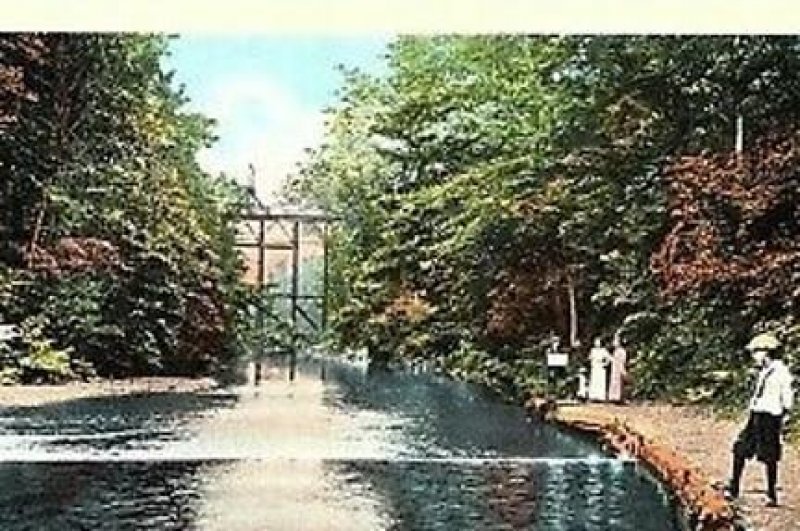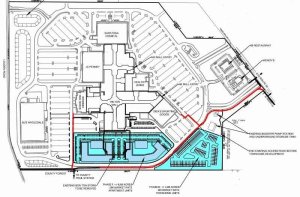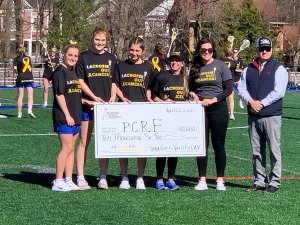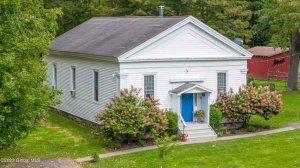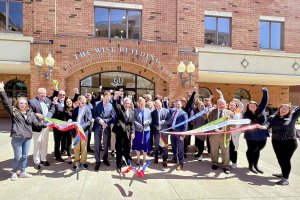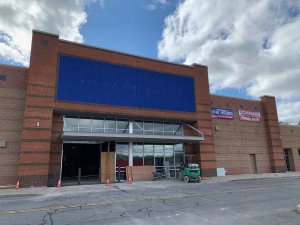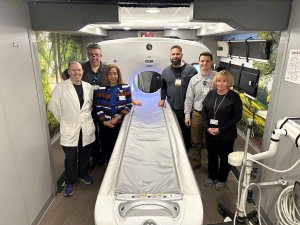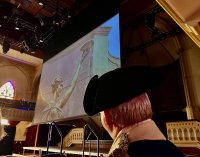Many are aware that one of the first steam railroads in the country was the Saratoga and Schenectady Railroad, which began regular service in 1832. The coming of the railroad provided a great boost to the growth of the resort town of Saratoga Springs. Fewer may realize that sixty years later the resort and the surrounding communities benefited greatly by another transportation revolution, the electric railway. However, the beginning of the trolley age was not without its birth pains.
In 1880, Major John L. Butman moved to a home on Union Avenue in Saratoga Springs. He was well known in railroad circles for his development of several railroads in New England, include the Fitchburg Railroad and the famous Hoosick Tunnel in western Massachusetts. His move to Saratoga may have been for the purpose of extending those railroad lines into New York State. In 1881 he became the superintendent of a new local corporation, the Saratoga Lake Railroad, which built a steam railroad to the lake and connected passengers to the White Sulphur Hotel by a steamer named Lady of the Lake, all owned at the time by the rail line. Mission accomplished for Mr. Butman.
In July 1889, Butman, now living on Regent Street, joined with prominent Saratogians including Caleb Mitchell, a well-known gambling promoter and occasional village president, and Damian Vail, former partner in the Geyser Springs, to form a new enterprise, the Saratoga Electric Railway Company (SER) and build a railway to the Geyser, Kissinger and Vichy Springs, providing transportation to these popular attractions. The railway was expected to continue on to Ballston Spa to link up with other lines. Unlike the lake railroad, this line would utilize electricity provided by a local generating station which powered trolleys by overhead lines.
The venture began on a promising note. Saratoga Springs officials approved the application of the company to construct the line beginning on Hamilton Street, south of the Grand Union Hotel. Property owners along the route readily signed consent agreements to allow passage through their parcels, and construction began in the summer of 1889. Power was to be supplied by a dynamo plant to be operated by waterpower derived from Eugene Wiswall’s dam on Cosea creek (near the present classroom in the State Park).
Problems began when the company proposed to make a grade crossing of the Delaware and Hudson tracks near Geyser Spring. The D&H opposed the plan, citing the disruption the crossing would have on their train schedules, forcing them to halt their stream trains to allow passing of the trolleys. The D&H managers also suspected that the “electric scheme” was only a feeler by the Fitchburg railroad to gain access to the New York market.
To prevent the crossing, in September 1889 D&H workers piled Vermont marble blocks alongside the railroad at the proposed crossing and kept a locomotive standing near the site to prevent any surreptitious nighttime attempts by the SER to cross the D&H line. Major Butman announced that work would be suspended for the season, and that no attempt would be made to cross the D&H tracks until the following spring.
D&H filed suit to prevent the crossing, and a stay was issued by the court until the case was settled. However, trouble arose the next spring when the Saratoga Electric Railroad commenced work for the season in mid-June. Apparently ignoring the court’s ruling, trees were cut down and electric poles were strung to within 20 feet of the proposed crossing. Rumors were rampant that Major Butman had a gang of men in the electric road’s storehouse ready to “swoop down and make the crossing.” To prevent any overnight crossing attempt, the D&H stationed two engines, three cars and their own gang of men at the site. No crossing was attempted, but by daylight the electric company’s poles had been sawed down and left on the grass.
Butman assured local officials that no premature crossing would be attempted, stating that “when we cross it will be in the daytime, and when we have the unquestionable right.” As it turned out they never got that right. In December 1890 the Court ruled in favor of the Delaware and Hudson, and the Trolley line was never permitted to make the crossing.
Although the trolley line to Geyser Springs opened for business at the end of August 1890, the extension of the line to Ballston Spa was temporarily abandoned. It was not until 1899 that another enterprise, the Saratoga Traction Company, extended the original SER line from Geyser Springs to Ballston. Their railway included the iron trestle over Geyser Creek shown in the image and curved sharply south as it approached the D&H track. The railway to Ballston Spa was constructed southward at a safe distance east of the D&H mainline, entering Ballston Spa on Malta avenue. Apparently it was of poor construction. This railway was only used for a few years before the trolley service, now owned by the Hudson Valley Railway, moved to the main D&H track. The trestle in the State Park was finally removed in 1918 at the request of the Reservation Commission, which noted that “the natural beauty of scenery along the Coesa Valley had long been destroyed by the presence of the unsightly abandoned trolley trestle that crossed the ravine.”
Today, the original trolley line can be traced in Saratoga Spa State Park, following the roadbed trail south of West Fenton St. to the Avenue of the Pines. The approaches to the trestle over Geyser Creek are visible just south of Orenda Spring, as is the southward bend of the line west of the Orenda pavilion. The railbed continues south on an earthen bridge over Coesa Creek and across South Road in the park.




